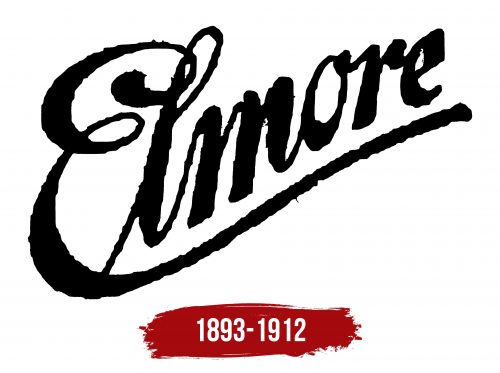The Elmore logo conveys harmony, consistency, and gradual growth. The emblem represents a company whose journey was short but impressive in the history of American automotive manufacturing. The logo highlights the uniqueness and originality of the cars, which have left a lasting impression.
Elmore: Brand overview
In the late 19th century, the Elmore Manufacturing Company existed in Clyde, Ohio, and was spearheaded by Harmon von Wechten Becker and later his sons James and Burton. The Elmore Company initially began by manufacturing bicycles between 1893 and 1897. However, the attraction of the burgeoning automobile industry soon forced them to shift their focus to the production of automobiles.
A distinctive feature of Elmore automobiles was that they were powered by two-stroke engines, which, remarkably, lacked valves. This feature was cleverly used in marketing to advertise their uniqueness. In 1902, the Elmore Company took another step forward with the three-cylinder Buckmobile. A subsequent evolution occurred in 1906 with the introduction of a four-cylinder version.
As the American automobile sector evolved, Elmore positioned itself as a brand offering simple and economical cars. But as the 1910s progressed, problems arose. Elmore’s commitment to two-stroke engines became its Achilles’ heel when the industry trended toward more efficient four-stroke engines. As a result, the company’s market position weakened, and competition from the growing automobile giants only intensified.
Although the Elmore Company reached its zenith of production in 1910 with over a thousand automobiles per year, its journey was short-lived. By 1912, production lines stopped, leading to the company’s closure after nearly two decades of operation. Although Elmore’s life was short-lived, its legacy in the annals of early American automobile manufacturing remains, especially with its bold introduction of the two-stroke engine.
Meaning and History
What is Elmore?
It is an American automobile manufacturer known for producing automobiles in the early 20th century. The company, located in Elmore, Ohio, was founded by the Elmore brothers. Relatively advanced two-stroke engines characterized the cars. Despite its success and popularity, the company ran into financial difficulties and was acquired by General Motors. As a result, the brand was discontinued.
1893 – 1912
Since the Elmore Manufacturing Company logo was created in the 19th century, it aligns with the design trends of that era. The logo features an elegant wordmark written diagonally, underscored by a long line extending from the first letter. The font is handwritten and cursive, adorned with loops and swirls. The use of black enhances the logo’s sophistication and refinement.
The wordmark’s diagonal placement gives the logo a sense of movement and dynamism, reflecting the company’s innovative spirit during that period. The handwritten style adds a personal touch, making the logo feel more intimate and unique. The loops and swirls in the lettering create a sense of fluidity and grace, showcasing the artistry and craftsmanship that went into its design.
The long line extending from the first letter acts as a visual anchor, grounding the design while drawing the viewer’s eye along the length of the wordmark. This feature balances the composition and emphasizes the company’s name, making it more memorable.
The choice of black as the primary color adds a timeless quality to the logo, ensuring its elegance and sophistication endure through the ages. The contrast between the black lettering and the background highlights the intricate details of the font, allowing the beauty of the loops and swirls to stand out.





